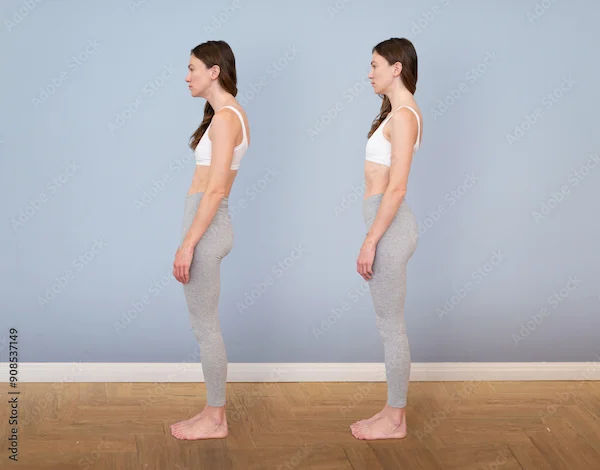Spinal Tap Myths Debunked
Uncover the truth behind common spinal tap myths. Get accurate information about the procedure, its purpose, and what to expect during and after a spinal tap.

Written by
Last updated on 3rd Jul, 2025
Introduction
A lumbar puncture, also known as a spinal tap, is a diagnostic procedure in which a healthcare provider extracts cerebrospinal fluid (CSF) from the spinal column. The procedure is painless, as an anesthetic is administered beforehand. A spinal tap is used to diagnose various conditions affecting the brain, spinal cord, and nerves, such as meningitis, leukemia, and encephalitis.
In This blog, we will learn more about spinal tap and debunk the myths around it.
Understanding the Procedure
How is a Spinal Tap Performed?
Steps for performing lumbar puncture are as follows:
1. Positioning:
You’ll be instructed to lie on your side (usually the left side) with your knees pulled to your chest.
Alternatively, you may sit and lean forward with your arms and head resting on a table.
Staying still and following instructions is crucial, even if the position feels awkward or uncomfortable.
2. Preparation:
Your provider will clean the skin on your lower back to maintain a sterile environment.
A local anesthetic will be applied to numb the area.
You might feel a slight burning sensation when the anesthetic is administered, but it will prevent pain during the procedure.
3. Needle Insertion:
A thin, hollow needle is inserted between two vertebrae in your lower back (usually between the third and fourth lumbar vertebrae).
The needle enters the subarachnoid space, the area between your spinal cord and the meninges (protective membrane layers).
An X-ray (fluoroscopy) may be used to guide the needle to the correct spot.
4. Fluid Collection:
Your provider will measure spinal fluid pressure.
A small sample of cerebrospinal fluid (CSF) will be collected for testing.
5. Completion:
Once the procedure is finished, the needle is removed.
A bandage is applied to the puncture site.
Purpose of Spinal Tap
Your healthcare provider may recommend a spinal tap to diagnose or assess the following conditions:
Intracranial Hemorrhage: Bleeding in the brain.
Dementia: To investigate underlying causes.
Excess Cerebrospinal Fluid: To assess and manage fluid buildup.
Encephalitis: Inflammation of brain tissue.
Leukemia or Other Cancers: For diagnostic evaluation.
Meningitis: Brain or spinal cord infection.
Multiple Sclerosis (MS): To detect autoimmune conditions.
Myelitis: Inflammation of the spinal cord.
Additionally, a lumbar puncture may be performed for:
Regional Anesthesia: Administering an epidural to block pain in the lower body.
Diagnostic Imaging Support: Injecting dye for tests like a myelogram.
Medication Delivery: Injecting cancer treatments or muscle relaxants.
Pressure Relief: Reducing intracranial pressure.
Debunking Myths About Pain and Discomfort
1. Myth: Lumbar punctures are really painful.
Fact: Most people feel only a brief sting when the local anesthetic is injected. The rest of the procedure typically involves a pressure sensation, and many find it surprisingly comfortable, with some even sleeping through it.
2. Myth: You can get meningitis from a lumbar puncture.
Fact: A properly performed lumbar puncture cannot cause meningitis. Meningitis is diagnosed using this procedure, but it does not result from it.
3. Myth: You'll have a bad headache after a lumbar puncture.
Fact: Spinal headaches may occur in 10-30% of people after a medically necessary lumbar puncture, but in research settings, the rate is less than 1%. This is due to special techniques, such as using a smaller needle with a dull tip that minimises spinal fluid leakage.
4. Myth: If the doctor sneezes during the procedure, it could cause paralysis.
Fact: The spinal cord ends above the area where the needle is inserted, making paralysis extremely unlikely. Nerve irritation can cause brief discomfort, but it doesn't result in paralysis. If this happens, the needle is quickly adjusted to relieve the sensation.
Spinal Tap Risks and Safety Concerns
Although a lumbar puncture (spinal tap) is generally safe, it carries some potential risks, including:
Post-lumbar puncture headache: Up to 25% of people may develop a headache after the procedure due to fluid leakage into nearby tissues. This headache typically starts hours or days after the procedure and may be accompanied by nausea, vomiting, and dizziness. The pain worsens when sitting or standing and usually improves when lying down. These headaches can last from several hours to a week or longer.
Back discomfort or pain: It's common to experience pain or tenderness in the lower back following the procedure, which may sometimes radiate down the legs.
Bleeding: Bleeding may occur near the puncture site or, in rare cases, in the epidural space.
Brainstem herniation: In rare instances, a brain tumor or other space-occupying lesion can increase pressure inside the skull. Removing cerebrospinal fluid may lead to compression of the brainstem, which connects the brain to the spinal cord.
To prevent this rare complication, a CT scan or MRI is typically done before the lumbar puncture to check for any space-occupying lesions and increased intracranial pressure. A thorough neurological examination is also performed to rule out any underlying issues.
Effectiveness and Necessity of Spinal Tap
1. When is a Spinal Tap Necessary?
Diagnosing Infections: It’s used to diagnose infections affecting the brain, spinal cord, or surrounding areas, such as meningitis or encephalitis.
Diagnosing Neurological Disorders: A spinal tap is necessary for diagnosing conditions like multiple sclerosis, Guillain-Barré syndrome, and certain cancers that involve the brain or spinal cord.
Detecting Bleeding or Inflammation: It helps in detecting bleeding in the brain (intracranial hemorrhage) or inflammation (myelitis) of the spinal cord.
Measuring Pressure: It is used to measure cerebrospinal fluid pressure, which can help assess conditions like hydrocephalus (excess fluid in the brain) or intracranial hypertension.
2. How Effective is it in Diagnosis?
Highly Diagnostic for Certain Conditions: A spinal tap is highly effective in diagnosing infections like meningitis or encephalitis, as it provides direct access to cerebrospinal fluid for testing.
Useful for Detecting Autoimmune and Neurological Disorders: It plays a crucial role in diagnosing multiple sclerosis, Guillain-Barré syndrome, and other neurological diseases by analysing the composition of cerebrospinal fluid.
Less Effective for Some Conditions: While effective for detecting certain disorders, it is less helpful for diagnosing non-neurological issues or conditions unrelated to the spinal fluid.
Complementary Diagnostic Tool: Often used alongside other tests like MRI or CT scans to provide a more comprehensive diagnosis.
Conclusion
In conclusion, a lumbar puncture (spinal tap) is a valuable and effective diagnostic tool used to identify a variety of conditions affecting the brain, spinal cord, and nerves. While it may sound intimidating, the procedure is typically painless, thanks to the local anesthetic administered beforehand. It is crucial for diagnosing infections like meningitis, encephalitis, and neurological conditions such as multiple sclerosis or Guillain-Barré syndrome. Additionally, spinal taps can help measure cerebrospinal fluid pressure and detect bleeding or inflammation in the brain and spinal cord.
Despite its benefits, lumbar punctures do carry some risks, such as post-procedure headaches, back discomfort, or, in rare cases, bleeding or complications related to brainstem herniation. However, these risks are minimized through careful preparation and medical evaluation, including imaging to rule out any contraindications before the procedure.
It’s important to debunk common myths about lumbar punctures, such as concerns about pain, meningitis risks, or paralysis. By understanding how a spinal tap works and addressing misconceptions, patients can feel more confident and informed when undergoing this procedure.
Consult Top Orthopaedician
Consult Top Orthopaedician

Dr. Manoj Dinkar
Orthopaedician
15 Years • MBBS, Dip (Orthopaedics)
New Delhi
THE DOCTORS NESST, New Delhi

Dr. Pradeep Lucas
Orthopaedician
7 Years • MBBS, Diploma in Orthopaedics, Fellowship in DFSI
Bengaluru
Revival Multispeciality Clinic, Bengaluru

Dr. Padam Singh Gautam
General Physician/ Internal Medicine Specialist
43 Years • M.B.B.S (WARDHA M. S.), F.A.G.E. (MANIPAL), F.A.I.M.S. (Pb.), M.A.I.M.S. (Pb.), M.R.S.H. (LONDON)
Noida
Dr Padam Singh Gautam Fracture Clinic, Noida
(225+ Patients)

Dr. Deep Chakraborty
Orthopaedician
14 Years • MBBS,MS (ortho) Diploma sports medicine (FIFA),Specialist in complex trauma, sports medicine and joint replacement
Kolkata
Dr Deep Chakraborty, Kolkata
(125+ Patients)
Dr. Girimahesh Yadav
Orthopaedician
14 Years • MBBS, DNB Orthopedics
Nellore
ENEL Hospitals, Nellore

